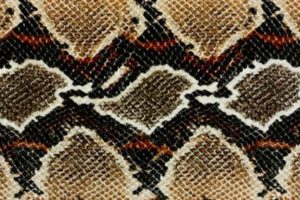
Trust me, shed serpent skins in basements are a common occurrence in the majority of residential neighbourhoods. They provide a perfect sanctuary to reptiles, vermin and other vexing critters. So, instead of panicking, find out how the serpent invited itself in the first place and whether there are more than one.
Here’s what I did to handle the same situation twice in the last three years.
How and Why Snakes End Up in Basements
Basements are usually old, dark, dingy and virtually deserted by homeowners. Most of them have breaks in the foundations and side walls; gaps around windows, vents and doors. All of these leave your basement vulnerable to serpents, rodents and other annoying pests. Add in the fact that basements are warmer in winters, making them ideal vacation spots for cold-blooded reptiles.
I used to stack woodpiles, boxes and other extra stuff on shelves and along the corner wall of the basement. Many of us use basements for storage, which is why it’s often messy down there. So? The disarrayed state of basements offers multiple hiding spots to snakes.
What To Do If Found Snakeskin In The Basement
If you find shed skin in your basement, here’s what you need to do.
Look Around
Get in the Sherlock mode, leave panicking for later. Grab a powerful flashlight — basements are often dimly-lit — and scan the area. Look for cracks and fissures that may house snakes. Remember, these slithering beasts are excellent climbers. So, a snake might climb the wall and perch behind a box on a shelf, hang around a supporting joint, beam or pipe, slither under the floor or cuddle near a water heater. My point is, don’t leave any corner during your search operation.
If you come across more shed skins, there’s a strong possibility that there’s a whole family of snakes living down there. Regardless of the suitable habitat, snakes cannot hibernate in the basement for days and weeks. The hunger will force it to come out of its hiding spot and search for food. So, you may or may not find a snake living in one of its dens.
During your search, you might also find a chalky, pasty substance resembling bird poop. That’s a snake’s faeces. It often has remnants of hair and fur that can tell you about its last meal. If you find such waste, you’ve got a snake to capture.
Call Pest Control or Wildlife Specialist
If you’ve found an occupied/unoccupied snake den or more shed skins in your basement, your immediate response should be to contact a specialist. He will take one look at the left-behind skin and tell you whether the snake is venomous or not. If you want it gone, the expert will remove the serpent from your place.
The first time I found a shed snakeskin, I took it to our local pet store. The specialist there told me it belonged to a corn snake. I contacted the pest control expert to rescue me from this snake predicament the second time it happened.
Seal the Cracks and Openings
Getting snakes out of your basement or any other part of the house is easy since they use pre-existing openings for entering. Seal all the cracks and fissures in your basement to lock them out. It will also decrease rodents and vermin appearances as they also take advantage of such openings in foundations, walls, windows and pipes.
Control Rodent Problem
One of the reasons for snakes nesting in basements is food, rats, mice and other vermin. If you control the rodent population in your area, snake occurrences will automatically decrease.
Target all the clutter that draws rodents. Remember, cleanliness is the best preventative measure for both snakes and pests.
Use a Broom
If you’re sure the snake hiding in your basement is non-poisonous, you can persuade it to leave by using a broom. A docile one like a corn snake might take the nearest opening (window, door or vent) and leave the building.
However, make sure you don’t get too close because even the non-venomous ones can inflict painful bites, especially when they feel cornered.
Remove Shrubbery and Grass
Snakes are particularly fond of hiding in shrubs or tall grass near the foundations. The unruly shrubbery offers them perfect camouflage. Regularly tend to the grass and shrubs to ensure snakes cannot use them for hiding.
Conclusion
Basements, especially the old ones, are usually dark, dingy and hushed. So, it isn’t strange that we find a live snake or its shed skin in our basements. The best approach is to let the professional handle the snake infestation and prevent it from expanding to areas of your home. Homeowners should investigate the sources that allowed them access to their basements and seal them. As a result, snake problems will not occur frequently.
